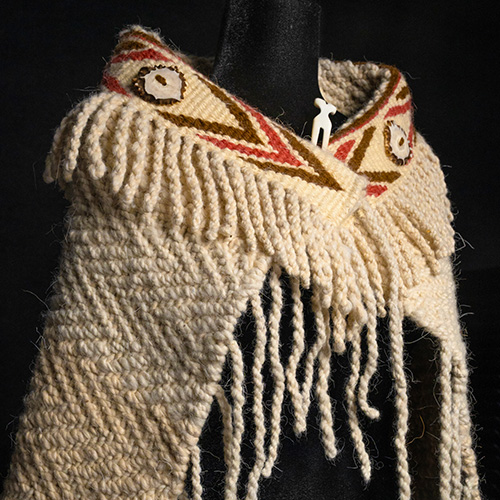Two rovers roam the surface of Mars, delivering data and imagery to NASA’s Jet Propulsion Lab (JPL). Soon they will be joined by the Mars 2020 rover, designed by a team that includes scientists and engineers and UW School of Art + Art History + Design alumna Erin Murphy (BA, Interaction Design, 2013).
Murphy is an interaction designer. The field focuses on the relationship between individuals and the technology they use, to make the user experience as positive as possible. Interaction designers influence the design of everything from mobile phones to GPS systems for cars. Or in the case of the Mars 2020 rover mission, the digital tools that operators will use to control the rover remotely.

“I oversee the design strategy and production of planning and visualization tools for the Mars 2020 rover,” Murphy explains. “Much of my work involves sketching out potential user experiences and discussing their feasibility and implementation challenges. A lot of my role is just helping people on this mission take the abstract plans and ideas they have in their heads and bring them into a tangible, sharable, concrete form for conversation.”
As a UW student, Murphy had little interest in space exploration. That changed when her partner for a capstone project, a classmate fascinated by space, proposed that they design a telescope for amateur astronomers to improve the experience of exploring the night sky.
“The more I researched the amateur astronomer community, the more aware I became of the problems with available tools for observing the night sky,” Murphy recalls. “I started to see how interaction design could help people by offering alternative methods of learning about space. That’s how I developed a passion for exploring design interventions in space exploration.” Murphy and collaborator Luke Springer dreamed up Pollux, a (hypothetical) telescope that would annotate the night sky, direct users to interesting features, and enable them to seamlessly share their observations with others.

Murphy continued to look skyward during a Boeing internship that involved redesigning touch interface experiences for flight decks. So when JPL began hiring interaction designers, she didn’t need much convincing. She was among the first to arrive.
“We were the first group to incorporate user-centered design and interaction design methodologies into the operational software production at JPL,” says Murphy. “They were looking for someone who had a formal design education and an interest in growing in an environment that had not yet established a design culture.”
I think my younger self would be pretty skeptical if she was told she would be working with NASA scientists.
Being the first is never easy, as Murphy quickly learned. It took a while to convince veteran engineers and scientists that interaction design has value. But Murphy eventually won them over and has since been promoted to senior user experience designer for the Mars 2020 mission. Now scientists and engineers seek her out while developing software tools, to better consider the needs of operators. “That’s all a designer could ask for,” she says.
Of course being part of a groundbreaking project is pretty cool too. When the Mars 2020 rover lands on Mars, it will be the first rover capable of detecting signs of possible past microbial life, particularly in special rocks known to preserve signs of life over time. It will have a dedicated cache for collecting and storing samples that might someday be brought back to Earth. And it will be the first to test oxygen production from the Martian atmosphere — an initial step in preparing for future human contact, according to the Mars 2020 website.

“The days that are particularly interesting to me are ones that have what I like to call ‘JPL Moments’ — moments when you step back from the design work, reviews, and meetings and realize that you’re building spacecraft,” says Murphy. “Someone might ask me, ‘Do you want to see this spacecraft that we’re building right now? Do you want to see this cubesat that’s almost done?’ I’m like, ‘Of course!’”
It will be a few years before Murphy and the rest of the team will see how their digital tools perform in real time. The Mars 2020 rover is scheduled to launch during Summer 2020 and land on Mars in February 2021. But Murphy already knows she’s had a hand in something special — not just the technology, but also the teamwork.
“I think my younger self would be pretty skeptical if she was told she would be working with NASA scientists,” says Murphy. “But I’ve been in the trenches, designing the very tools and operations procedures people will rely on every day starting in 2020 to ensure the safety of a spacecraft on Mars, all while collaborating with inspiring individuals who never worked with a designer before. It’s been challenging in the best possible way.”
. . .
For more about Erin Murphy’s experience at JPL, check out her interview on the UW Design Alum website.
More Stories

A Healing Heart Returns
In February, the UW Symphony will perform a symphony that Coast Salish elder Vi Hilbert commissioned years ago to heal the world after the heartbreak of 9/11. The symphony was first performed by the Seattle Symphony in 2006.

The Public Impact of Private Cities
Geography major Edwin Bai has researched private cities, developed by individuals and corporations, that "take the libertarian idea of low government regulation to the maximum."

Coast Salish Traditions are "Woven in Wool" at the Burke
A Burke Museum exhibit, co-curated by Coast Salish weavers and Burke curators, highlights the importance of weaving to Coast Salish communities.